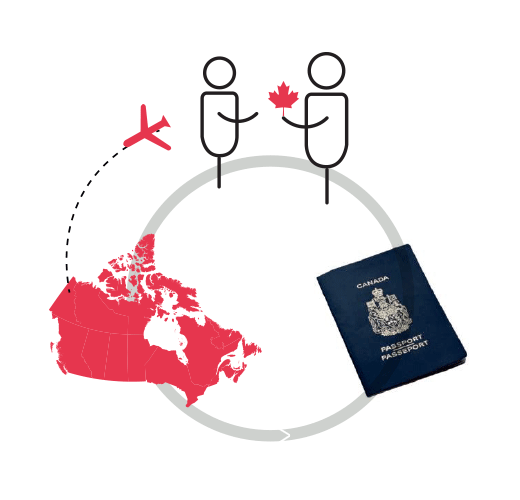About us
Founded and led by Rachad Zeaiter, a Regulated Canadian Immigration Consultant (RCIC - ICCRC), RZIC offers legal counseling and representation services with Citizenship and Immigration Canada and the Immigration and Refugee Board of Canada for all legal categories: visitors, students, workers, family sponsorship, economic immigration, citizenship, and refugees.
RZIC can help you throughout the Canadian immigration and settlement journey from pre-application up to settlement, integration, and citizenship.

Why Canada
Overview

Canada offers countless opportunities for the prosperity of individuals and families, with a countrywide average household disposable income of ~USD 24,000, higher than the OECD average.
Useful Information
Climate
The majority of Canadian cities and towns have a harsh winter, with temperatures dropping below 0 °C during winter. However, summer temperatures pleasantly range from 20 °C to 30 °C. British Columbia (Vancouver) in contrast has a mild and rainy winter.
Language
Canada has 2 official languages, English and French. French is the official language of the province of Quebec, where more than 85% of the French-speaking Canadians live. English is by far the most spoken language countrywide, and is also widely used in Quebec.
Population
Canada’s population is ~36 Million (2016 estimate), and it welcomes ~300,000 new Permanent Residents every year, and is expected to continue doing so.
Education
Canada is officially the world’s ‘most educated country’, with more than 50% of Canadians holding a university degree. The Canadian government invests heavily in the education of the population and as such all Canadian provinces provide education almost for free to Permanent Residents and Canadians at all levels. Generally, education is available in English and French, but minorities are also guaranteed their local native-language educational institutions in certain areas.
Health Care
Similar to education, Canada offers free and high quality healthcare in all provinces to Permanent Residents and Canadians. However, it should be noted that the public insurance does not cover prescription drugs, home or long care, prescription glasses, and dental services. Canadians generally pay for these from their own pockets or through a private insurance program.
Economy
Canada is one of the world’s largest and most advanced and free economies. It is a member of the Organization for Economic Cooperation and Development (OECD) and the Group of Eight (G8). Its economy is comprised of three main sectors: Manufacturing, Mining, and Services, and is a net exporter of Energy (mainly oil & gas).
MAIN
CITIES
How it works
Canada’s immigration management scheme is created by the Immigration and Refugee Protection Act, which was passed into law in 2001 and came into force on June 28, 2002, replacing the Immigration Act of 1976. Two departments of the federal government share the responsibility for administering the statute and its regulations: (1) Citizenship and Immigration Canada (CIC) and (2) the Canada Border Services Agency (CBSA), (Canadian Immigration and Refugee Law for Legal Professionals, EMOND). In 2017, Canada is projected to admit 320,000 new Permanent Residents (2016 annual report to parliament on immigration).
Take the free immigration assessment questionnaire

Mission



